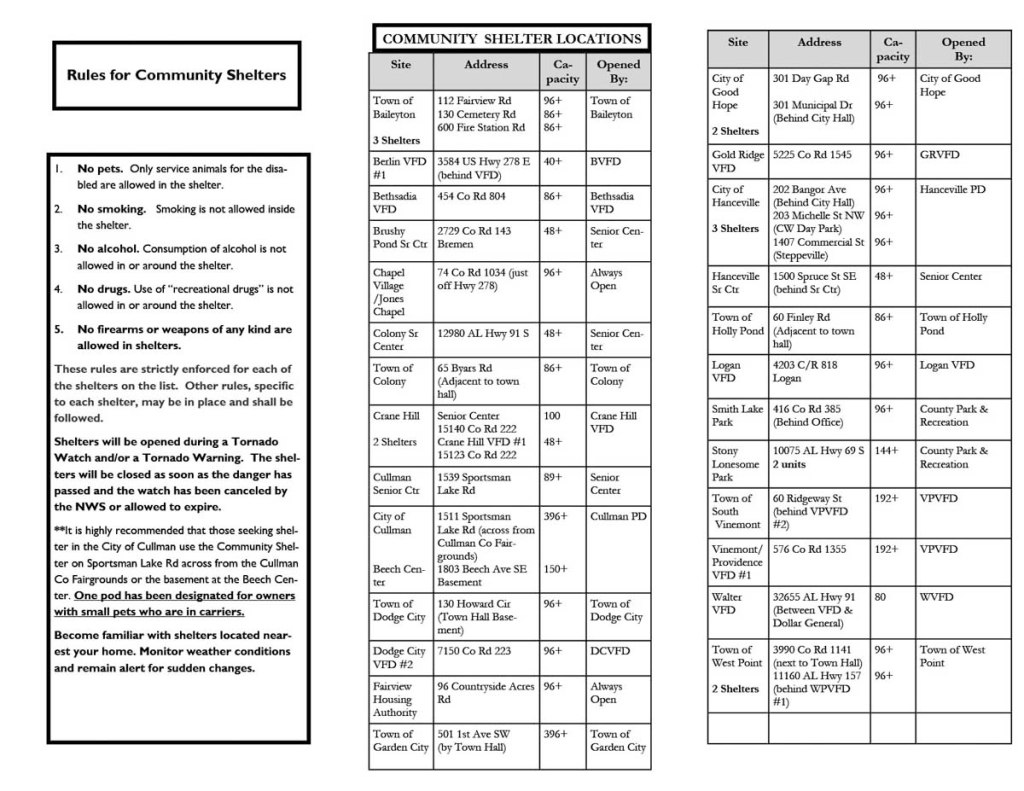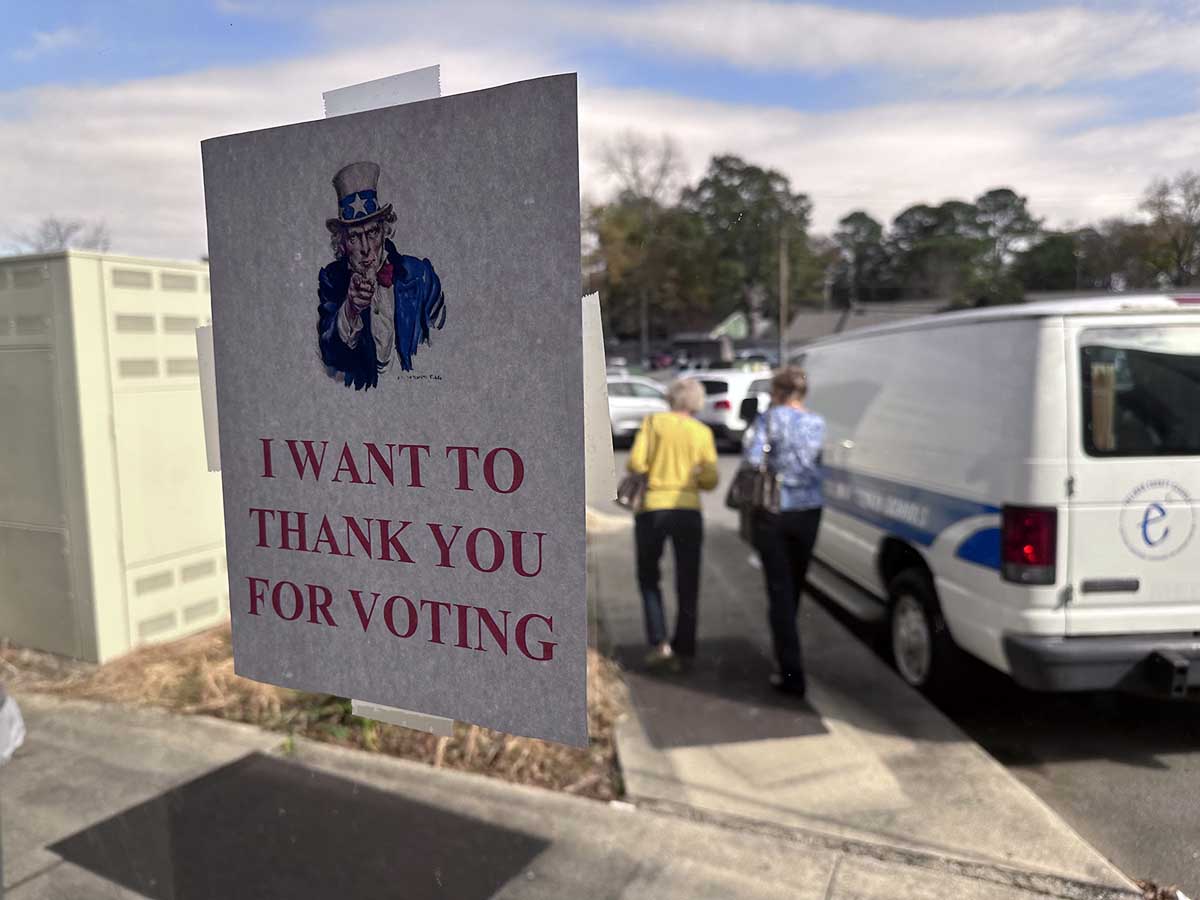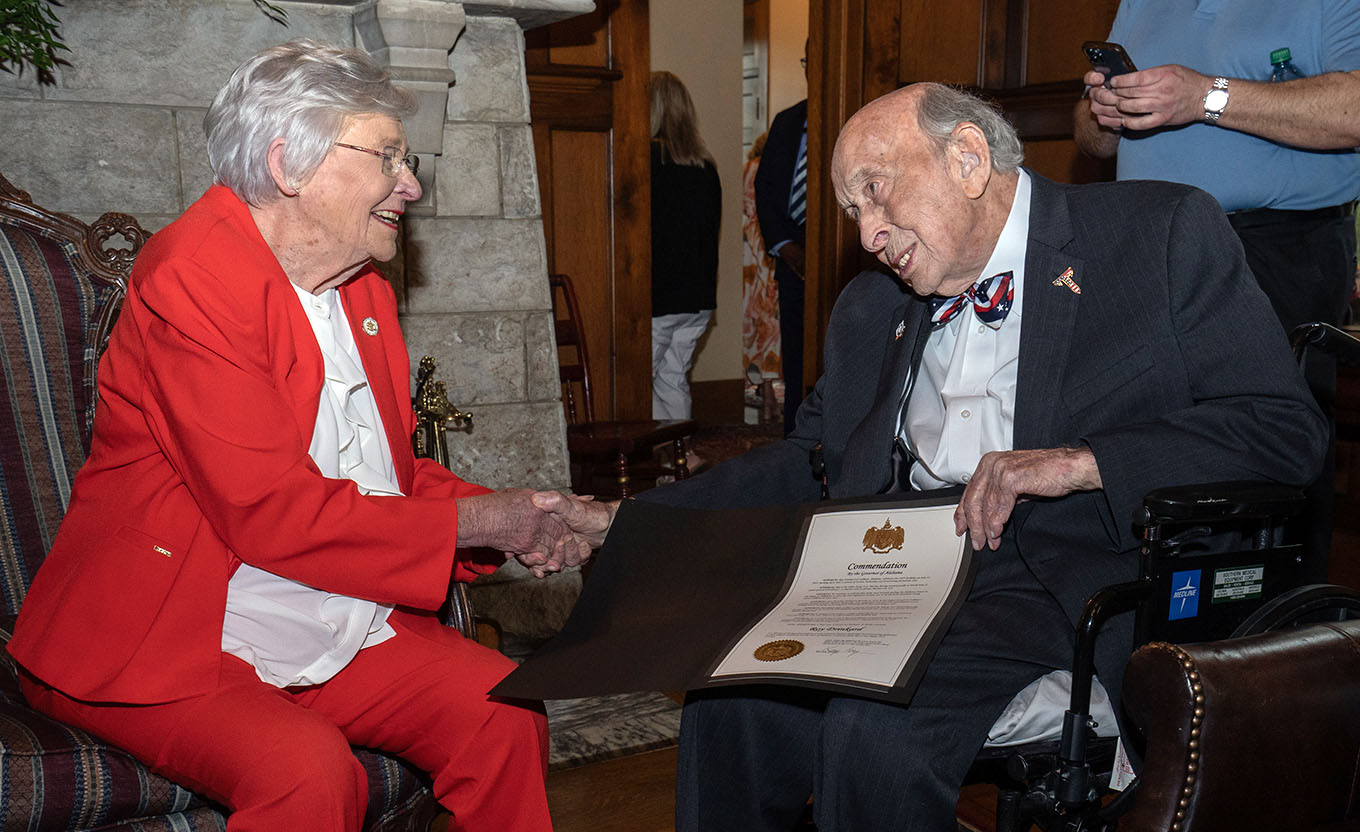Awareness counts…especially in April
Published 5:30 am Tuesday, April 4, 2023

- Shelter listings
Almost 12 years since the 2011 tornado that tracked havoc from Bremen to Cullman to Fairview, Cullman County has been spared another weather disaster of such scale. But the statistics suggest that if it does happen again, odds favor that it’ll happen in the month of April.
Already in the Deep South, stormy season has arrived with fury. A March 24 tornado outbreak in Mississippi spawned numerous twisters that, according to NASA, tracked for a combined 100 approximate miles and claimed 21 lives, including at least one in north Alabama. Only a week later, a separate storm system swept from Arkansas northeastward into Illinois, devastating a populated area outside Little Rock and killing 32 people across the South and Midwest.
Trending
Aside from causing brief utilities outages for some, the storms that hit Cullman County during the April 1 weekend left no significant damage, said Cullman EMA director Tim Sartin. But, he added, April is the area’s busiest month when it comes to dangerous weather: “It’s right on up there, that’s for sure,” he said.
National Weather Service data bears that out, reflecting more Alabama tornadoes in the month of April than in any other. Since the service began keeping statistics on the topic in 1950, Alabama has seen 575 recorded tornadoes in April, with March coming in second at 400 and November — in the heart of the year’s second turbulent weather season — third at 292.
On top of that, Cullman County lies at the center of one of the nation’s most active tornado zones. For the same 71-year record-keeping period, NWS data places Cullman County’s 95 confirmed twisters fourth among all Alabama counties, behind Jefferson County (105), Mobile County (100), and Baldwin County (97).
Sartin said essential severe weather preparedness advice doesn’t change from season to season, and that being weather aware during the year’s most active tornado time is the key first step to enacting any safety plan. NWS always stresses the basics: When a tornado is approaching, get as low as you can (preferably in a basement or the ground level of a sturdy structure), put as many walls between yourself and the outdoors as you can, and — despite the incredible doorway observer footage to emerge across social media from recent Mississippi and Arkansas storms — stay well away from windows and doors.
Here’s a rundown of more tornado safety tips from the National Weather Service always to have in mind:
- In general, get as low as you can. A basement below ground level or the lowest floor of a building offers the greatest safety. Put as many walls between yourself and the outside as possible. Avoid windows at all cost!
- Tornadoes could be obscured by rainfall or come at nighttime. Do not wait until you see or hear the tornado, it may be too late.
- Do not waste time opening or closing windows and doors. It will not protect the structure. You will only waste time and put yourself and others in greater risk. Use those valuable seconds to find a place of safety.
- In homes or public buildings: go to the basement or a small interior room, such as a closet, bathroom or an interior hall on the lowest level. Close all doors to the hallway for greater protection. If possible, get under something sturdy like a heavy table. Protect yourself from flying debris with pillows, heavy coats, blankets or quilts. Use bicycle or motorcycle helmets to protect your head.
- In mobile homes: leave well in advance of the approaching severe weather and go to a strong building. If there is no shelter nearby, get into the nearest ditch, low spot or underground culvert. Lie flat, covering your head with your hands for protection.
- In vehicles or outdoors: when tornadoes are possible, limit your outdoor plans or finish them early. Stay close to a sturdy shelter. If caught outside, find shelter in a ditch or remain in your vehicle and cover your head for protection. Do not take shelter under a highway overpass, where wind speeds can increase due to a tunneling effect. It is best to not put yourself or others in a situation where no sturdy shelter is available.





